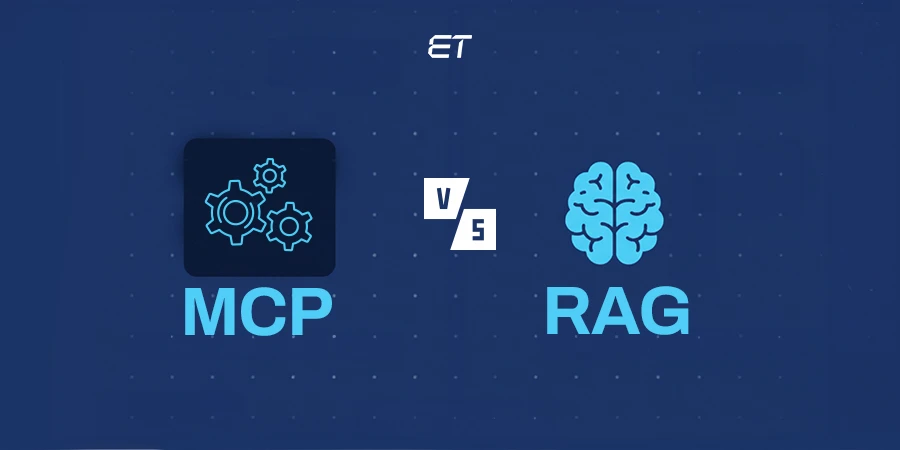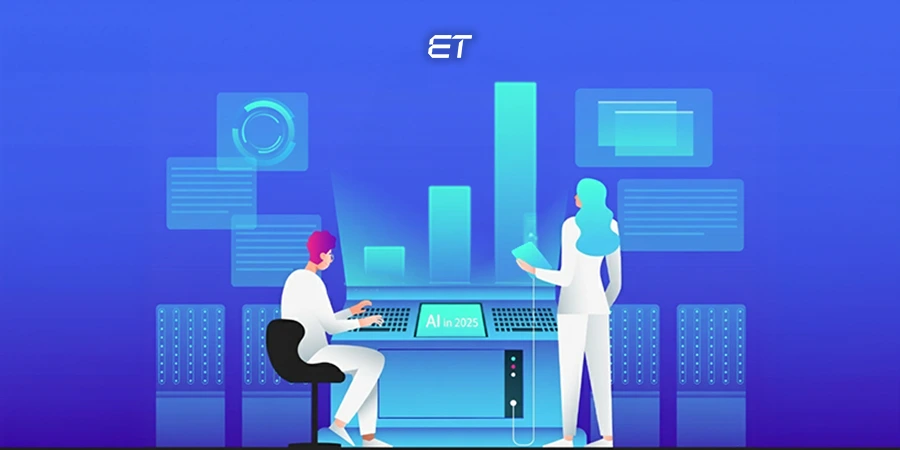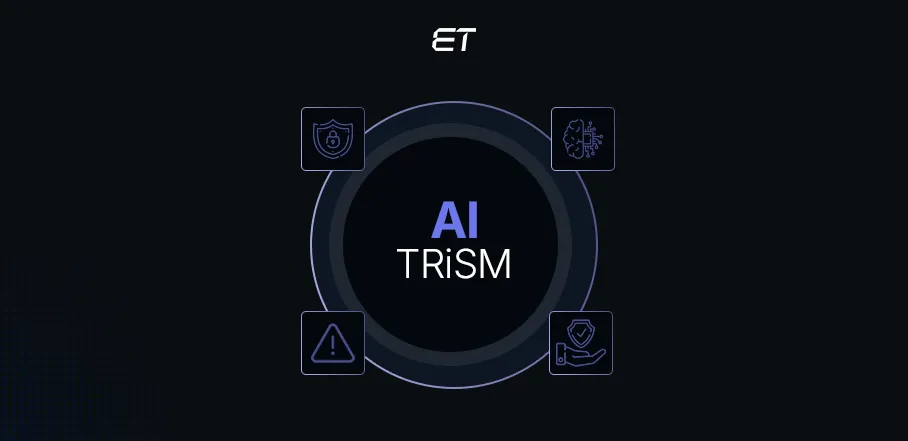
AI TRiSM: A CTO’s Guide to Securing Enterprise AI
- AI TRiSM strengthens governance, security, and compliance across enterprise AI deployments.
- It helps CTOs manage risks like bias, shadow AI, and data breaches.
- The AI TRiSM framework improves trust and brand image among stakeholders.
- Clear policies and team training are vital for successful AI TRiSM implementation.
Imagine this – You’ve just launched an AI-powered customer support bot to handle queries from diverse regions. It tackled user questions like a pro in the beginning.
Suddenly, it started giving inconsistent responses to users from different regions.
You discover that the underlying AI model and data lacked cultural nuance, resulting in misinterpretations.
This situation raises crucial questions – in a race to innovate faster, are you overlooking trustworthiness and governance? How can you fix this as a CTO?
AI TRiSM (Trust, Risk, and Security Management) is the appropriate solution in this situation. It helps ensure your AI systems are resilient, auditable, and ethical from day one.
In this blog, we’ll explore the AI TRiSM framework, its importance, implementation, and why it’s imperative for every CTO.
Get in touch to simplify your AI TRiSM journey
What is AI TRiSM?

AI TRiSM is a framework developed by Gartner for safer and responsible AI adoption within organizations through improved governance.
It addresses concerns regarding AI security, privacy, and reliability. Handling these issues enables CTOs to maintain business integrity.
The framework also helps build AI systems that are high-performing, reliable, ethical, and resilient against threats.
Think of the framework as the immune system of your AI ecosystem, constantly monitoring, detecting, and preventing risks. It keeps models healthy, secure, and ethically aligned as they operate.
To understand the AI TRiSM meaning, check out its key pillars described in this table.
| Pillar | Definition | Example |
| Explainability & Monitoring | Ensures AI decisions are transparent and model behavior is continuously tracked. | A financial firm uses dashboards to explain loan approval decisions and detect output drift. |
| Model Operations (ModelOps) | Manages the full AI model lifecycle, from deployment to updates and performance. | A retail company automates retraining schedules for its product recommendation model. |
| AI Application Security | Protects AI systems from threats like adversarial attacks or malicious inputs. | A healthcare provider implements input validation to block manipulated patient data. |
| Model Privacy | Safeguards personal or sensitive data that AI models use. | A chatbot masks identifiable user data to meet HIPAA and GDPR compliance. |
AI TRiSM fits into the enterprise lifecycle by embedding governance, oversight, and resilience at every stage. From data sourcing, model training, to post-production monitoring, it ensures your AI models use reliable information.
Learn how to improve IT infrastructure and lifecycles with AIOps
Importance of AI TRiSM in Maintaining AI System Security and Integrity
Let’s look at some industry insights:
- As per Gartner’s Q3 2024 report, AI-enhanced malicious attacks are the #1 enterprise security risk.
- IBM predicts that AI infrastructure attacks will increase in 2025, coinciding with the rise in AI adoption. It’s because only around 24% of AI projects are secured.
Moreover, Akiba Saeedi, Vice President, IBM Security Product Management, predicts Shadow AI (unsanctioned AI tools) will surge in 2025. These tools pose risks of exposing sensitive data and compliance violations.
What are these numbers and stats trying to tell us?
They point to an urgent trend – companies are implementing AI systems faster than they’re developing governance policies. It’s harming the brand image and data protection.
Discover how AI TRiSM is the solution to ensuring the integrity and security of your firm’s AI systems.
1. Securing Systems Against Cyber Threats

87% of security professionals state that their firms have been hit by an AI-driven security attack last year. AI models are becoming high-value targets for attackers as companies scale AI usage.
Securing these systems is an urgent crisis that requires prompt action.
AI TRiSM offers a structured framework for integrating security measures throughout the AI lifecycle. It assists CTOs in the following ways:
- Focuses on AI AppSec, model monitoring, and privacy to reduce security and compliance risks.
- Identifies probable system failures and averts them.
- Proactively identifies and alerts teams about vulnerabilities in AI systems and workflows.
The framework supports continuous monitoring and validation of AI models, ensuring they operate within defined legal boundaries.
Moreover, the AI TRiSM framework detects anomalies or policy violations in real-time. This enables top-level executives to respond to threats promptly and secure their systems.
These practices foster trust among stakeholders by demonstrating a commitment to responsible AI deployment.
2. Safeguarding Brand Integrity from Harmful AI Outputs
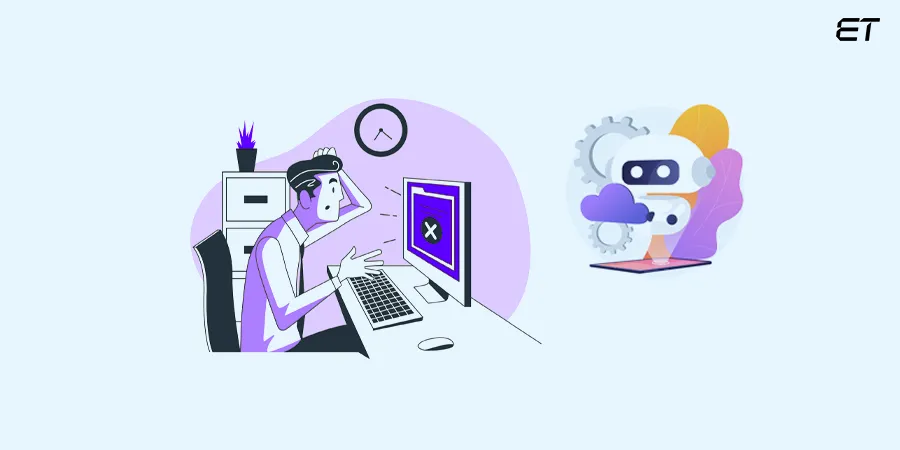
For CTOs or CEOs, protecting brand reputation is essential, especially when AI systems regularly tackle customer interactions and decisions. It’s because these AI outputs that customers generate are often biased and contain harmful data.
For example, in January 2025, security company Enkrypt AI conducted a study on DeepSeek-R1. Enkrypt found that DeepSeek was 11 times more likely to generate harmful output than OpenAI’s o1 model.
They found that 83% of the model’s results were discriminatory and biased on gender, health, religion, and race.
Events like this can cause media criticism, public outrage, and regulatory scrutiny. As a result, it severely damages the company’s image. AI TRiSM helps business leaders avoid these situations by:
- Helping them enforce explainability, fairness checks, and real-time monitoring.
- Ensuring models are trained on representative data, audited for bias, and continuously tested post-launch.
Thus, the framework empowers top executives to develop systems that not only perform well but also behave responsibly.
3. Regulatory Readiness for Emerging Laws

For C-level executives steering enterprise AI adoption, regulatory pressure is mounting fast. Emerging laws like the EU AI Act and the U.S. AI Executive Order require AI systems to be transparent and risk-assessed.
This is where the AI TRiSM framework comes in.
Rather than handling compliance requirements individually, TRiSM embeds governance into every AI lifecycle stage.
- Ensures seamless compliance from model development to deployment and monitoring.
- Handles regulatory factors like documentation, bias detection, and audit readiness.
And the urgency is real. According to EY, only 11% of European financial firms feel prepared for AI regulation, while 25% have no governance strategies.
For such situations, AI TRiSM empowers CTOs to prevent associated risks like regulatory fines, biased decisions, and data misuse. Thus, the framework turns regulatory preparedness from a roadblock into a competitive edge.
Understand the best GenAI development practices for leaders
How to Implement AI TRiSM in Your Organization

After understanding the real-world AI TRiSM meaning and its benefits, you may consider implementing the framework.
Focus on key factors like business objectives, security gaps, team training, and creating governance policies. Here’s a step-by-step approach to follow.
Step #1: Determine the Company’s AI Objectives and Risk Appetite
Before deploying or scaling AI, you must identify the organization’s core business goals and risk appetite.
First, define the expected outcomes of your AI systems or applications. These can be better customer service, lead generation, or innovation. To do this, collaborate with other senior executives to map AI use cases to strategic objectives.
Then, assess the risk levels your firm can handle in areas like data privacy, model explainability, or third-party integration. For example, you can allow a 2% model error rate in customer support, but maintain a zero tolerance for privacy violations.
Moreover, the risks you may uncover include customer data leaks, biased outcomes, and third-party tool vulnerabilities. After that, follow these steps:
- Conduct executive workshops to define AI success metrics and acceptable risk thresholds.
- Categorize AI projects by criticality (e.g., customer-facing vs. internal tools).
- Document tolerance levels for bias, transparency, and system failure.
These steps will provide a basic understanding of how to utilize the AI TRiSM model.
Step #2: Evaluate Current AI Systems
Next, assess the current AI systems your company uses daily, such as:
- Agentic AI tools or platforms
- AI-powered chatbots for automation
- Generative AI systems like GitHub Copilot for code generation
- Third-party APIs like Google Cloud Vision API and Amazon Comprehend
- Custom AI built by in-house teams for workforce scheduling
Then, you need to determine unsanctioned systems or shadow AI usage within your organization. For example, employees may use ChatGPT to generate client emails. Or, marketing teams might upload sensitive data to free image-generation tools for ad creatives.
After gathering this preliminary data, it’s time to build an AI system inventory.
Catalog every AI/ML model, automation tool, or generative AI system in use across departments. Pay close attention to third-party APIs, vendor models, or internal tools that you might have missed. Then, follow these strategies:
- Classify systems by purpose, sensitivity, and business impact.
- Evaluate each system’s security protocols, data inputs, output usage, and performance metrics.
- Work with IT and data teams to audit existing tech stacks.
This approach offers better visibility of your AI landscape, leading to informed governance decisions. You can also identify systems that need immediate monitoring.
Step #3: Establish Clear AI Governance Policies
After assessing all systems, it’s time to set governance policies on AI software development, deployment, and monitoring.
This is where AI TRiSM becomes essential, offering a structured approach to manage trust, risk, and security.
Begin by outlining foundational policies for AI governance and data use:
- Set clear rules around data usage, model explainability, and performance benchmarks.
- Define who validates AI models, audits outcomes, and monitors compliance.
- Use AI TRiSM to define responsibilities across data science, IT, security, and compliance teams.
- Develop model documentation standards, like datasheets or model cards, specifying model training process, usage, limitations, and ethical considerations.
- Create escalation protocols to handle harmful, biased, or unstable AI outputs.
Policies should also outline procedures for handling bias, drift, privacy breaches, and vendor accountability.
Step #4: Train Teams and Monitor Policies Regularly
Even the best AI governance framework is only as effective as the teams behind it.
As a CTO, ensure all relevant stakeholders, including data scientists, product teams, and legal teams, are well-versed in AI TRiSM principles. They must be up to date on evolving risks and regulations.
Begin by developing role-specific training programs. Data teams need guidance on responsible model development, while legal teams must know ethical AI use and compliance requirements.
Reinforce governance policies with regular reviews. Conduct monthly, quarterly, or biannual policy reviews to check if they’re working out and whether they need updates. You can achieve this by:
- Setting up a central AI governance dashboard to monitor policy compliance and performance.
- Host regular workshops on AI issues, policy updates, and current industry events.
- Build new compliance teams to improve the overall process.
A continuous training and policy review approach will make AI TRiSM implementation sustainable, ensuring long-term success.
Need assistance to handle IT operations?
How AI TRiSM Ensures Secure, Trustworthy AI Deployments
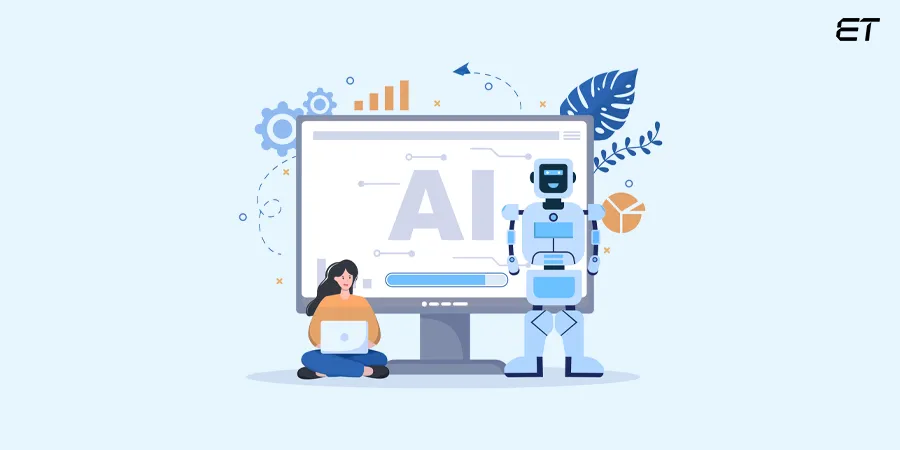
AI TRiSM plays a pivotal role in ensuring that AI deployments are secure, compliant, and aligned with business objectives. Here’s how each pillar contributes:
| AI TRiSM Role | Description | Impact on AI Deployments |
| Governance & Risk Management | Integrates trust, risk, and accountability into the AI lifecycle, from development to deployment. | Helps CTOs align AI systems with business objectives and organizational risk appetite. |
| Security & Threat Mitigation | Protects models from adversarial attacks, harmful outputs, and unauthorized access. | Ensures secure AI integration with real-time monitoring, anomaly detection, and access controls. |
| Transparency & Explainability | Promotes the use of tools like datasheets and model cards to document AI behavior. | Builds trust by enabling auditability and clear justification of decisions. |
| Compliance with Regulations | Ensures AI systems meet evolving global standards (e.g., EU AI Act, GDPR). | Reduces legal and reputational risks by maintaining compliance across various jurisdictions. |
| Operational Reliability | Flags model drift, bias, or data leakage post-deployment. | Maintains performance and prevents AI systems from degrading over time. |
| Strategic Enablement for CTOs | Transforms AI into a governed, strategic enterprise asset, rather than just a technical tool. | Empowers CTOs to scale AI confidently with resilience, safety, and control. |
Final Thoughts
AI TRiSM is no longer optional; it’s a must-have for CTOs navigating the complexities of AI integration and deployment.
The framework establishes structured oversight and safeguards in every phase of the AI lifecycle. It empowers CTOs and business leaders to protect brand reputation, secure data, and comply with evolving regulations. This leads to more sustainable, risk-aware AI success..
Therefore, organizations that implement the AI TRiSM framework will future-proof their AI strategy while minimizing risks.
Let’s build trusted and compliant AI systems together.
Frequently Asked Questions
1. What are the four pillars of AI TRiSM?
The four pillars of AI TRiSM are AI AppSec, ModelOps, Privacy, and Explainability. Together, they ensure trustworthy, secure, and compliant AI deployments in enterprise environments.
2. What is the future of AI TRiSM?
The future of AI TRiSM will evolve toward responsible AI adoption through automated governance and real-time risk detection. Companies will use the framework to stay aligned with global regulations.
3. What are the challenges in implementing AI TRiSM?
AI TRiSM implementation roadblocks can include a limited understanding of governance regulations, constantly evolving regulations, and a skilled talent shortage.

